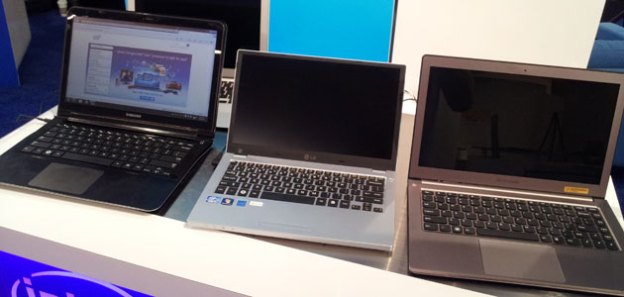
Intel, the big boss of chipmaking, dreams of a future in which consumers no longer have to deal with strained backs and battery anxiety from lugging their heavy laptops around all day.
The company hopes that the time of their dreams will arrive in the next few years, as it’s announced it will invest up to $300 million over that span in super-laptops it’s calling Ultrabooks. Intel plans on sending checks to hardware and software developers to help create Ultrabooks: thinner, lighter laptops that can run all day without recharging.
The $300 million fund is being managed by Intel Capital, the chip giant’s in-house development and investment arm.
Intel has already trademarked Ultrabook, which it described in a release as matching the performance of current laptops while having “tablet-like features.” While that’s relatively vague, it seems Intel wants its chips in notebooks that offer more power, more battery life and a break from the traditional clamshell design.
“Ultrabook devices are poised to be an important area for innovation in the $261 billion global computer industry,” Arvind Sodhani, president of Intel Capital, said in the release. “The Intel Capital Ultrabook fund will focus on investing in companies building technologies that will help revolutionize the computing experience and morph today’s mobile computers into the next ‘must have’ device.”
Intel said it will take three generations of chips to get to the size and power consumption levels it wants for the ideal Ultrabook. Things started this year with second-gen Core processors, which the company says allow for laptops that are only 0.8 inches thick. Power consumption will be addressed next year with Intel’s Ivy Bridge processors, which are supposed to be more efficient and better at handling graphics than current offerings. Finally, in 2013, Intel’s Haswell processors should cut power consumption by half of current processors, increasing battery life and allowing thinner devices because of decreased heat output.
So where does the $300 million come in? Because Intel has its processors in about 80 percent of the world’s computers, the company has a vested interested in making sure hardware and software companies can keep up developments at the pace Intel wants.
Editors' Recommendations
- Intel’s next-gen GPU might be right around the corner
- Intel develops a cryogenic control chip expected to streamline quantum computing


